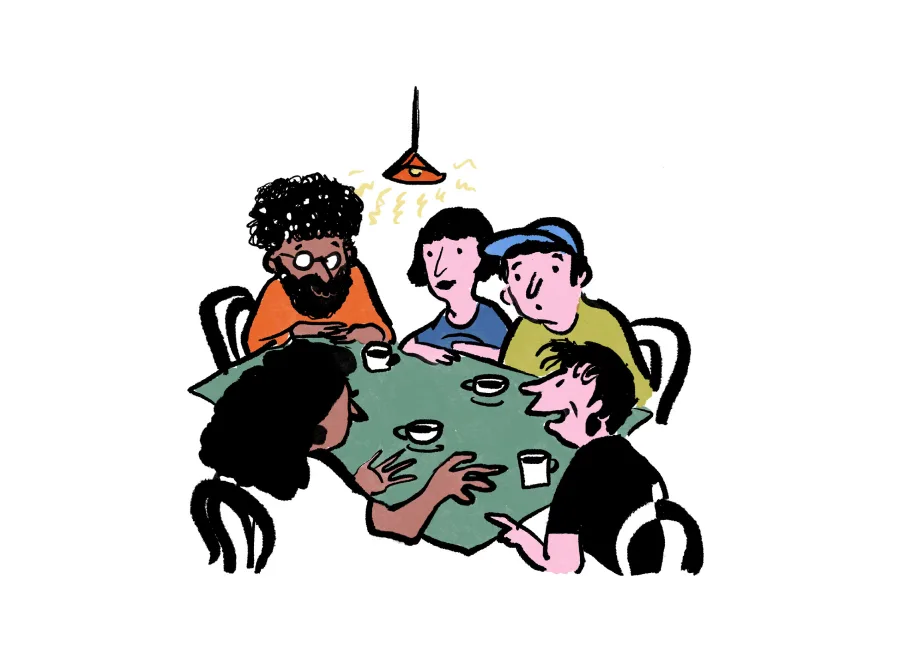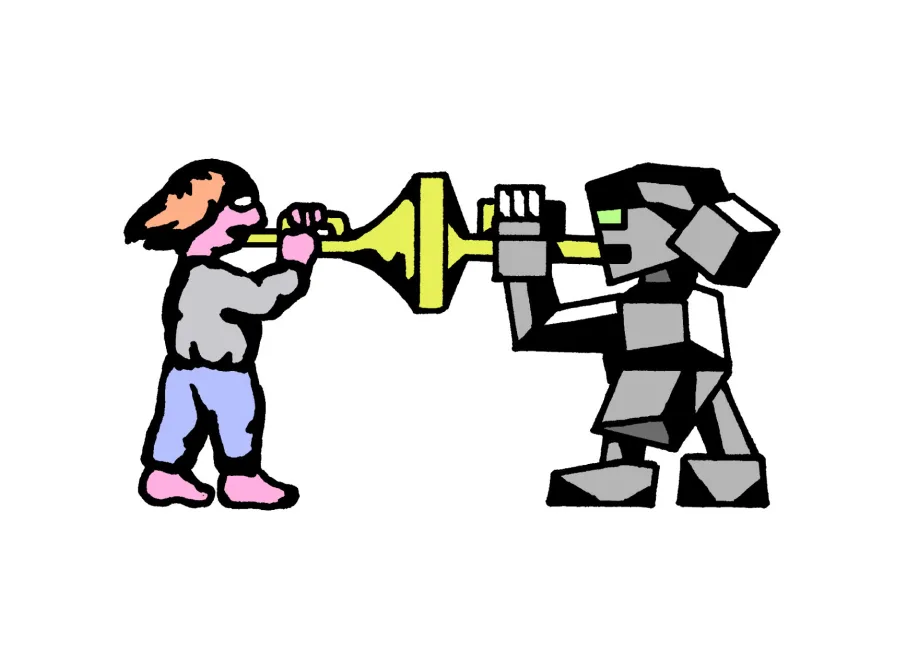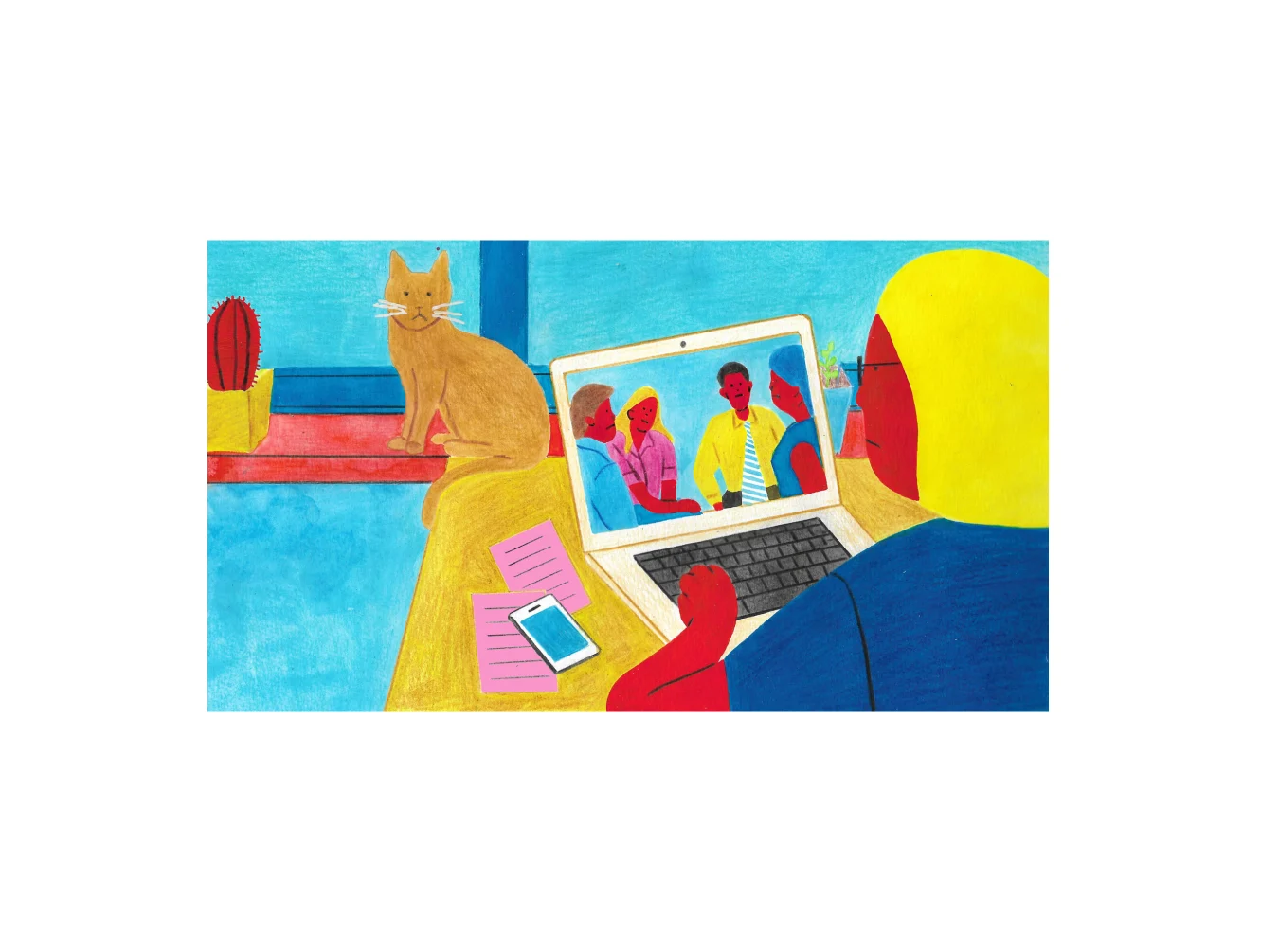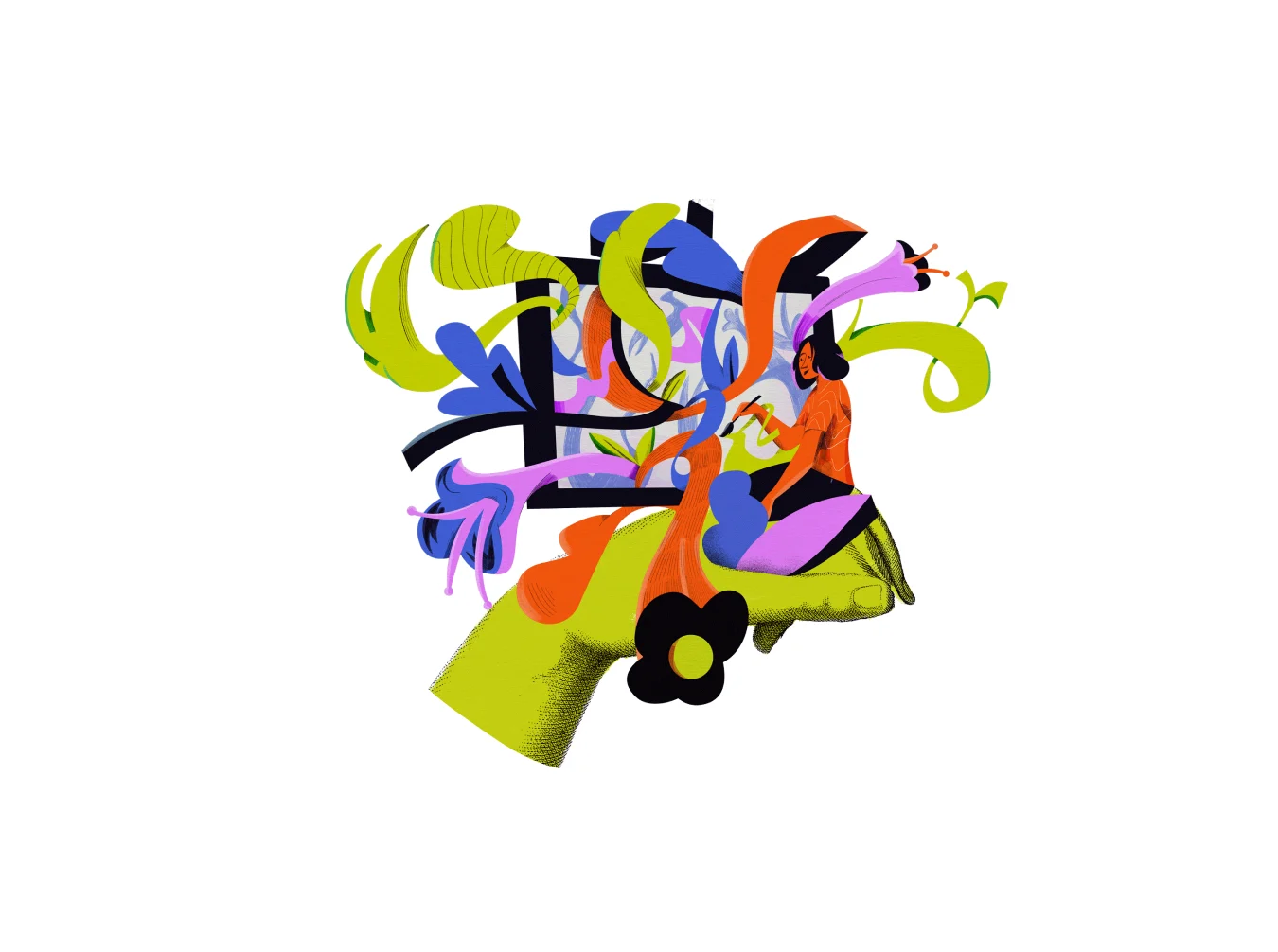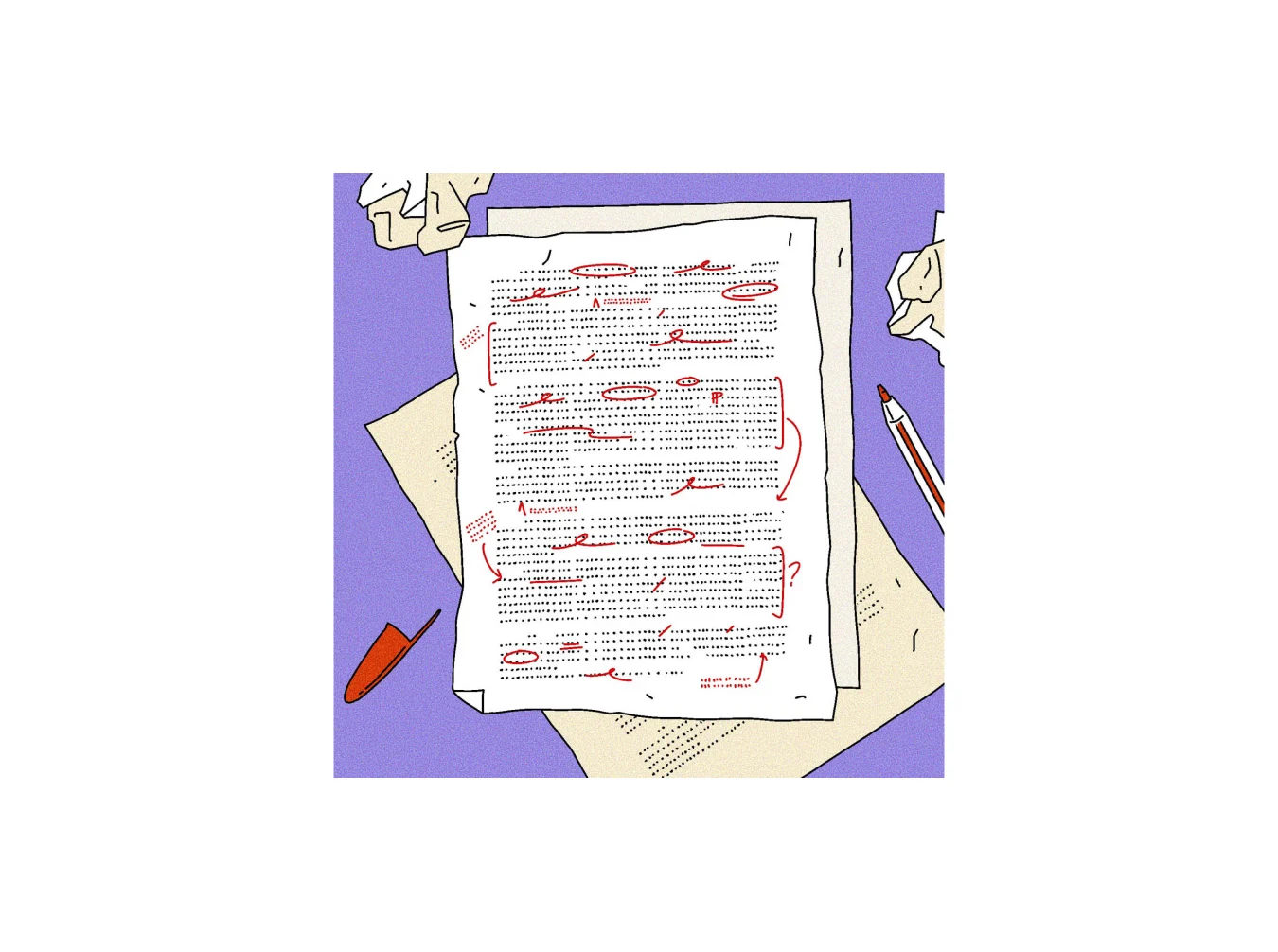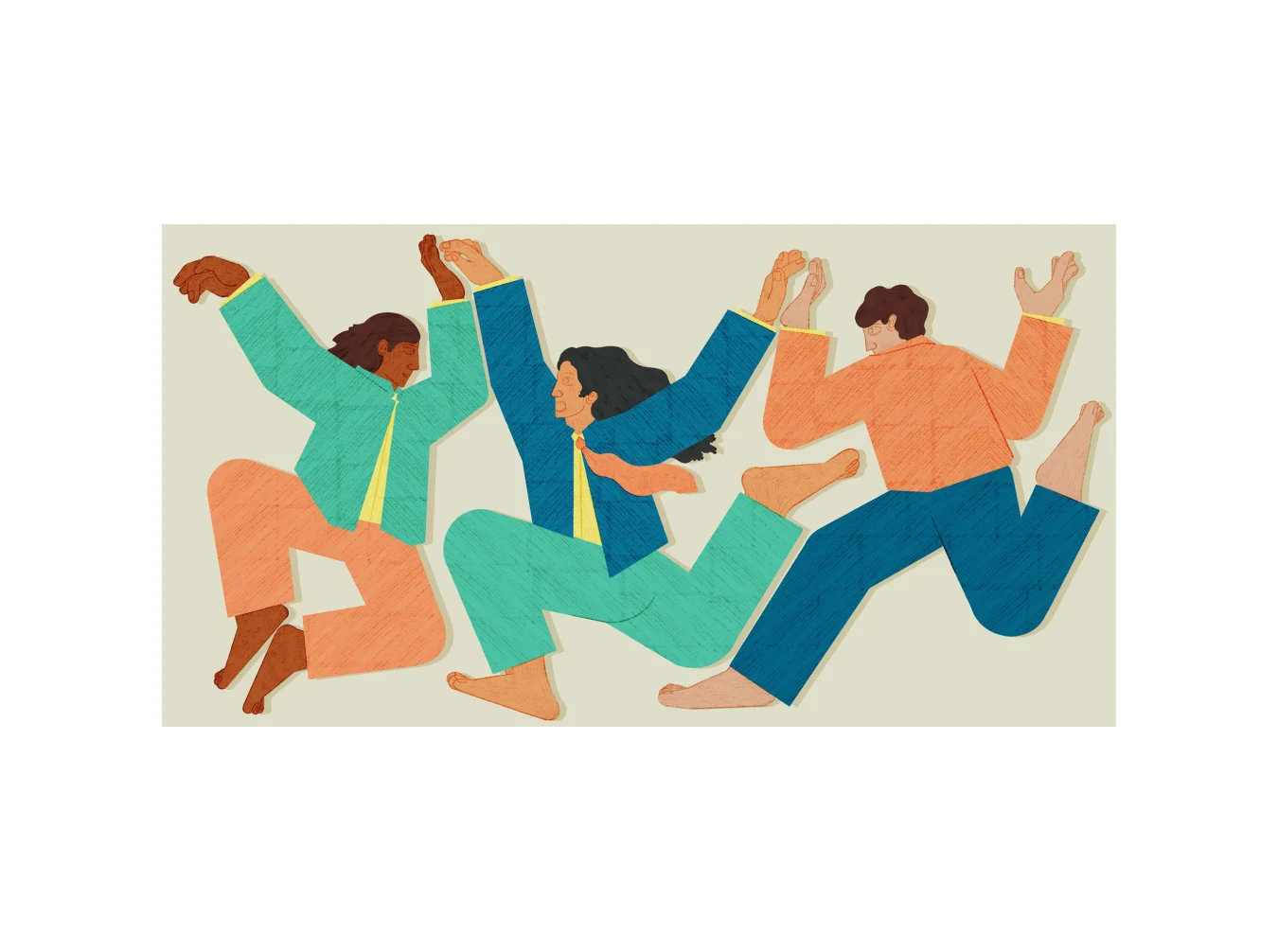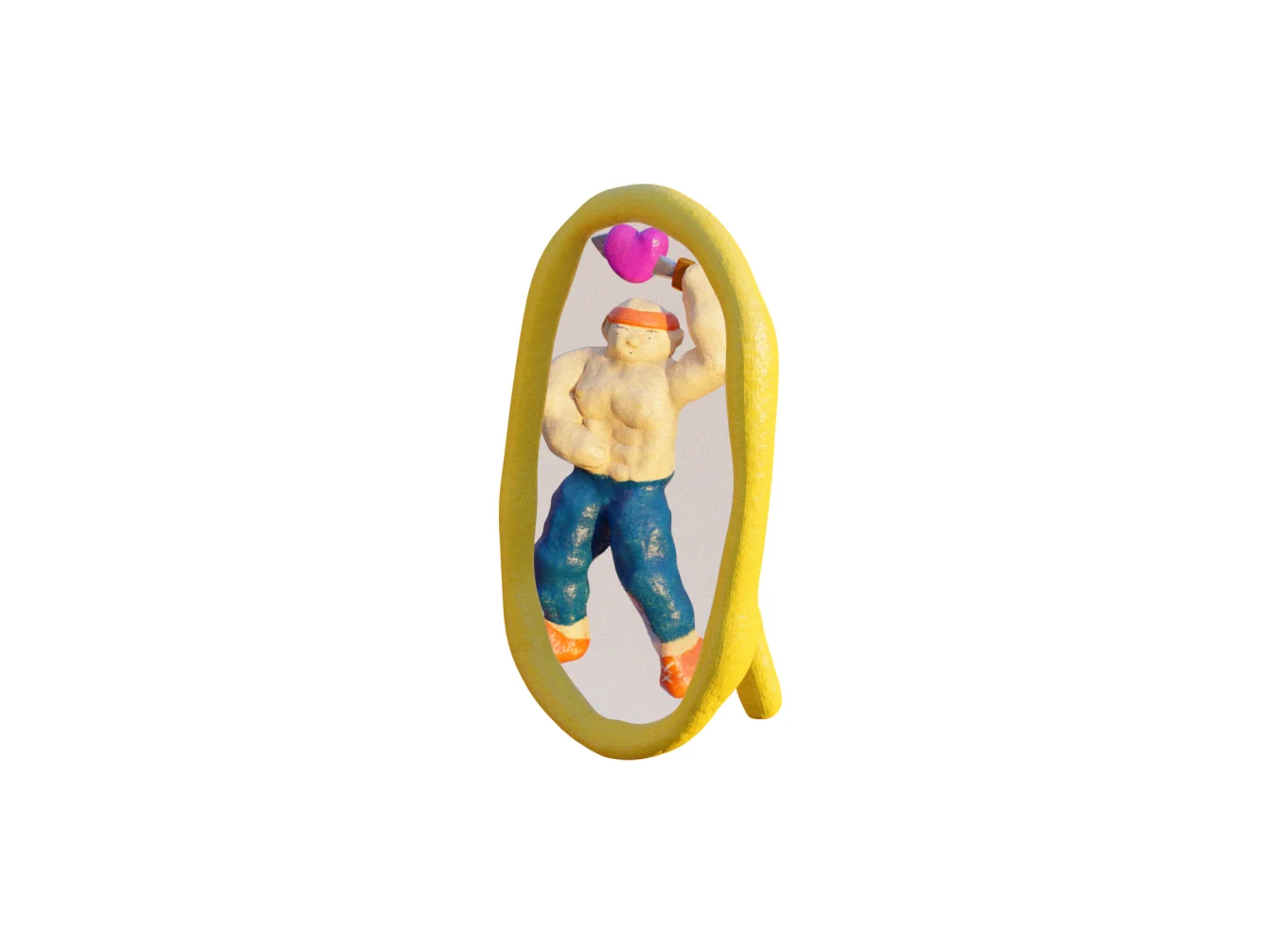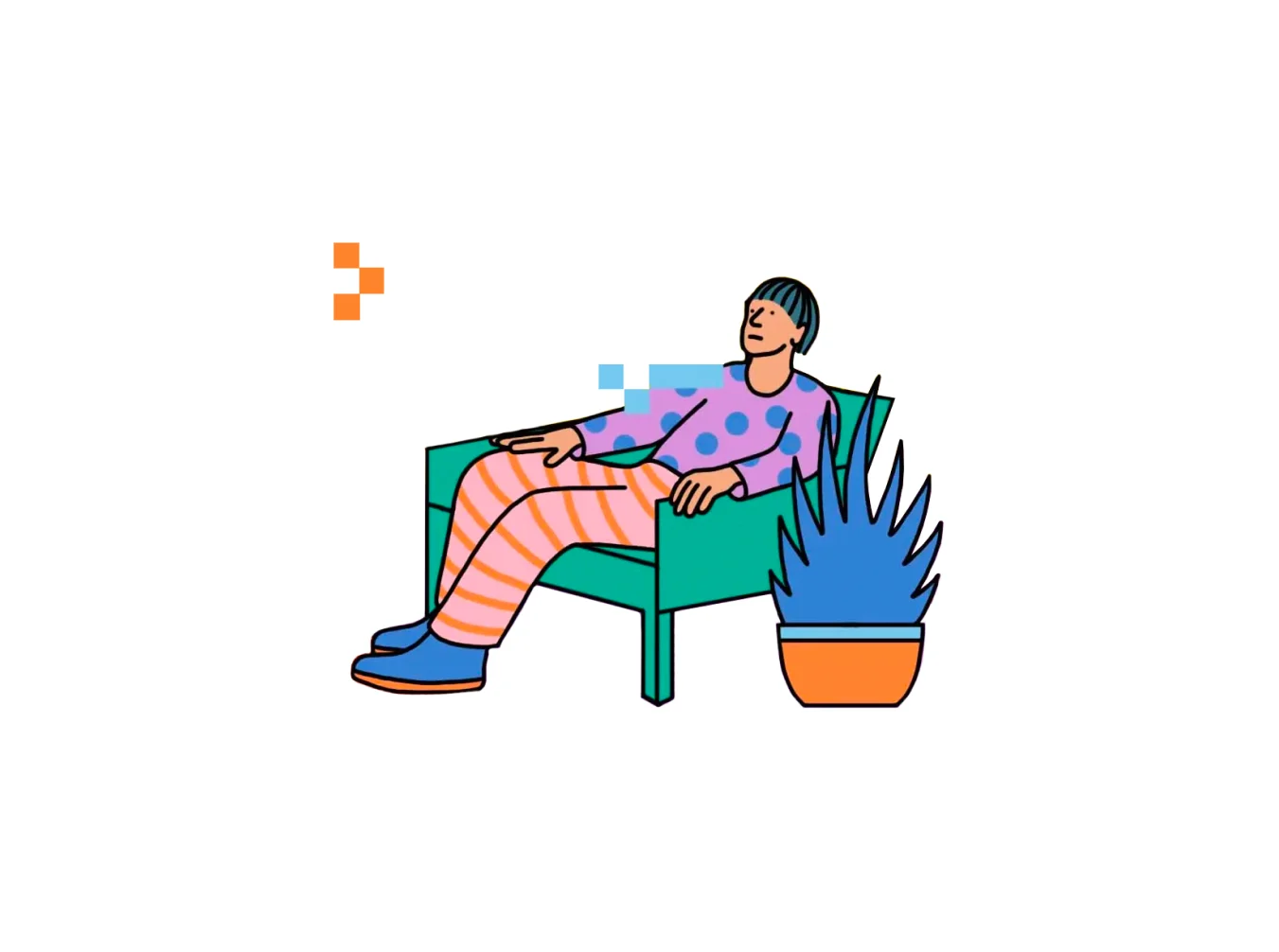

The creative industries are filled with workplaces plastered in neon signs, cutesy brand values, and free coffee. But their laid-back and easy exterior can often mask something more sinister. From bullying to crappy HR, and from long hours to working with “creative genius” bosses, the characteristics of a toxic workplace vary. James Cartwright speaks to those who made it out alive.
All names in this article have been changed for privacy.
Illustrations by Nicole Rifkin.
Ask anyone who works in the creative industries and they’ll probably absent-mindedly tell you what a friendly place it is to make your living. Despite being vast and global, we’re actually one big old close-knit happy family. Don’t believe me? Just look at a job description for any full-time or freelance gig at a design studio: These guys are all “flexible,” “generous,” “passionate,” and laser-focused on “wellness,” working for clients who are “world-leading,” “forward thinking,” and/or “game-changing.” And that’s just the job ads. Get inside the building and you’ll see from the luxurious soft furnishings, fully-stocked breakfast bar, and brightly-colored slogan murals that yep, creative industries equals non-stop fun.
Except when it doesn’t, which is often. Just like every other industry, ours has more than its fair share of stress, exploitation, bullying, and toxic workplace culture—let’s not forget that in the creative industries unpaid internships are still rife and bullying and harassment are considered “normal.” In 2021, Bectu, the UK’s largest union of media and entertainment professionals, conducted a voluntary survey of over 1,400 of its members and found that more than 70 percent of respondents had experienced bullying, sexual harassment, or abuse. 73 percent of those didn’t think that anything would be done if they raised the issues with senior management. That doesn’t exactly chime with the cheerful, work-hard-play-harder trope that most creative companies trade on.
The mindset of ‘creative work’ has invaded the home, our leisure time and the most intimate reaches of our personal lives.
When it happens, toxic behavior in the creative industries is no different to any other: The hours are long; evening and weekend work is expected but rarely fairly remunerated; and the pay is dreadful for as long as you’re young and exploitable. You and your work are treated only as commodities, and most of the noise that’s made about mental health and wellbeing is just that, noise. Rarely have I personally worked for a company that gives proper care and attention to staff experiencing difficulties with their mental health, although there are glimmers of hope that this is improving.
This is not a phenomenon unique to this industry. I’ve spent a long time working in the charitable sector too, and some of my clients there have been unashamedly cruel to their staff. I’ve seen people bullied out of jobs they excelled at to benefit the ego of a “genius” CEO, folks known to have experienced trauma sidelined from decision-making, and months of work wasted when leadership teams in “non-hierarchical” organizations decided to pull rank.
But the charitable sector is cash-strapped and chaotic, and in some instances there are lives at stake. Bad behavior stings a little more when it comes from an industry that’s remarkably lucrative, and in which the stakes aren’t really that high. Creative work may be fast-paced, but as one old boss used to repeatedly tell me, “nobody’s going to die if this work doesn’t get done.”
The pressure doesn’t come from the type of work that’s happening, but from the nature of modern work itself. As Oli Mould writes in his book, “Against Creativity,” “Capitalism forces us all to be agile, competitive, individual, flexible and, ultimately, creative. As a result, the world of work has become more precarious, piecemeal and unstable, but at the same time, all-consuming. The mindset of ‘creative work’ has invaded the home, our leisure time and the most intimate reaches of our personal lives. It leaches the resources that would otherwise be directed towards building relationships, resting, or playing, and redirects them towards more profitable ends.” Being badly treated in this climate is all-consuming.

When you’re on staff at a large company there are at least processes and procedures to go through if you need to make a complaint about how you’re being treated. The HR department exists to champion your rights as an employee. In spite of this, grievances in the workplace are often poorly handled, and sadly in some cases, procedures are used to stifle complaints rather than implement positive change to the culture of a workplace.
If you find yourself working in a toxic environment it can be an extremely isolating experience. When London-based graphic designer and art director Leon was made redundant from his full-time art direction job in June 2020, he took on a freelance role with an animation studio in the US. From the moment he was recruited, he sensed there was something off about the position.
Despite being on vacation, the client insisted he immediately dial into an onboarding meeting in which he was belittled and rudely spoken to, before being told he’d have to spend the rest of his trip creating sketches to present to the team on the morning he was set to travel back. “I was finishing sketches at the airport and had to present them to the client in the back of a taxi on the way home,” he says.
From there it went from bad to worse: “The communication in the team was really bad. They’d demand I deliver work to them at very specific times, but they were working on New York hours, so were making decisions when I wasn’t at my desk. I’d spend my mornings working on a particular direction, only to be told at lunchtime when the New York office opened that I’d wasted my entire morning just because nobody had bothered to keep me updated.”

I’ve seen people bullied out of jobs they excelled at to benefit the ego of a ‘genius’ CEO.
In the end, as the project was only supposed to take a week and a half, Leon took to working New York hours, starting his day at 1pm and finishing at midnight, just to keep the client happy. “Even when I did that, the creative director was just like, ‘It would have been more convenient if you’d done this from the start.’ Everything about the way they handled the job was deeply unprofessional.”
A slight lack of professionalism may not seem like too big a deal, particularly when you’re working for a new client. Behavior that seems passive aggressive or unreasonable can easily be forgiven in the short-term. But even small acts of aggression should be taken seriously.
In its guide to dealing with bullying and workplace harassment, the Chartered Institute of Personnel and Development (CIPD) is clear that, while “bullying can range from extreme forms of intimidation, like physical violence, to more subtle forms, like an inappropriate joke or ignoring someone,” small infringements are “likely to fester and intensify if you ignore it,” eventually leading to more severe forms of bullying and harassment.
“Abuse starts with words, with those little things,” says Joe, who landed a job at a screen printing studio in his mid-20s. Although he’d admired the outfit since his student days, it quickly became clear that it would not be a pleasant place to work, and what began as childish teasing eventually spiraled into constant verbal abuse and acts of physical aggression.

Get inside the building and you’ll see from the luxurious soft furnishings, fully-stocked breakfast bar, and brightly-colored slogan murals that yep, creative industries equals non-stop fun.
“The guy that ran the place saw himself as this kind of Gordon Ramsay character,” explains Joe, “so you’re shouted at on a daily basis and he goes out of his way to embarrass you in front of other members of staff. We had a guy on the team who was deaf in one ear, and they’d just constantly take the piss out of him for it.”
Misogyny was also rife in the studio, and female employees were expected to stay in the office and out of the workshop. Joe recalls one occasion when the team were printing on-site at a major gallery: “Before we set off for the day, [the boss] just said, ‘You can’t take Catherine, she’s too delicate.’”
It wasn’t just bullying behavior that made the studio such a difficult place to work, the macho attitude of his employer meant that Joe and his colleagues were often risking their physical health, with chemicals and solvents being used on a regular basis without the correct safety equipment being supplied. Joe and his colleagues were made to clean up corrosive solvents while only wearing washing-up gloves, with some staff experiencing dermatological problems as a result. Joe developed breathing problems because of the poor ventilation in the space and, “when I went to ask for a new mask, I was laughed at,” he says.
Unfortunately, calling his boss out only made things worse, and from then on he was constantly harassed for minor errors in his work. “He got into the habit of hanging me out to dry in front of everyone and telling me I was an amateur and way out of my depth. I was really, really upset. I cried, because printing was my world. When I told him I wasn’t happy with how he was speaking to me, he just said, ‘you know where the door is.’”

Workplaces run by “creative geniuses” are common in the creative industries. In a 2021 article for The Guardian, writer Otegha Uwagba details numerous cases of young employees working under hysterical and aggressive managers. Her own experiences as a young advertising executive were no different, and she “endured dressing downs and explosive rants from senior staff, along with countless racist slights.” Like many young people in the industry, she figured it was just part of the job.
But where one senior member of staff indulges in bullying behavior, more are sure to follow. These things are insidious, eventually affecting how a whole organization functions. Uwagba lists numerous global brands with friendly public personas that have been outed as “institutionally racist” or supporting a “cult of personality” or “culture of fear” in 2021. Galleries, publishing houses, breweries: it seems no industry is immune. When a whole working organization becomes toxic, it can be extremely difficult for newcomers to integrate as cliquey co-workers fail to value new views, backgrounds, or experiences.
Aged 26, writer Coralie had a 16-month inpatient stay as a result of a severe eating disorder. When she left hospital, she took on a full-time role at what she thought would be a dream company. They’d been understanding about her condition and seemed keen to support her through her rehabilitation, unlike some potential employers who had ghosted her when she explained her additional needs, like weekly therapy and a clearly defined lunch hour.
But the workplace ended up being aggressive, competitive, and cliquey. “I’d get emails at midnight asking for things to be completed by the following morning,” she says. Having told her employers from the start that she’d need time out in the week for therapy sessions, they’d regularly fail to factor them into her deadlines. “They’d so often be like, ‘Oh yeah, I know you’ve got therapy, but we need this done now… Or they’d book meetings in my lunch hour so I’d be forced to skip meals.”
You and your work are treated only as commodities, and most of the noise that’s made about mental health and wellbeing is just that, noise.
As the working environment became increasingly stressful, Coralie began to relapse, and explained to her employer how much she was struggling. Rather than help, they said the real issue was with her poor performance, not with her health. “In the end they wouldn’t let me go in front of clients because they told me it was embarrassing that I was so thin. It left me feeling completely ashamed of the way I was, and I ended up having the worst relapse of my life. I nearly died.”
Happily, Leon, Joe, and Coralie are no longer working for people that caused them so much anguish. Leon now has a permalance role at a national newspaper, Joe runs his own print studio (the largest of its kind in the UK), and Coralie has built up a successful freelance career for herself where she feels comfortable setting clear boundaries with her clients so her needs and health are never compromised.
There is also a wider acknowledgement that workplace culture in the creative industries needs to change. In late 2021, UK non-profit Creative UK announced a series of roundtables in which representatives from the film and television, music, advertising, games, theater, and fashion industries along with key unions, ACAS, and those with lived experience would come together to discuss ways to combat workplace bullying and harassment.
That these issues are now being talked about so openly should be cause for optimism, if not celebration quite yet, and while waiting for slow cultural change to materialize, talking openly about bullying and harassment may be the best way to deal with it. “It’s only since talking to my old colleagues that I realized it wasn’t just me who experienced it,” says Coralie. “I always thought everyone else was doing fine, but that turned out not to be true.”





